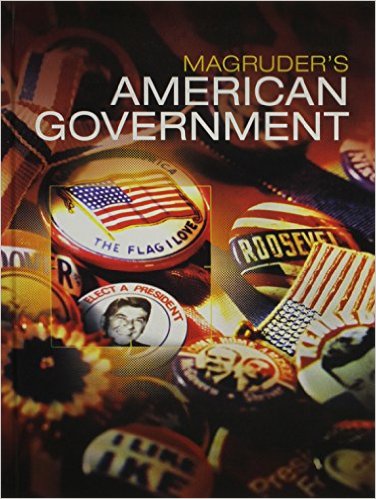
Magruder’s American Government
1st Edition
ISBN: 9780133306996
Textbook solutions
All Solutions
Section 5-1: The Presidency – An Overview
Exercise 1
Step 1
1 of 4
For an individual to be effective as a chief economist, he must have specific traits that can be referred to as diplomatic.
Step 2
2 of 4
The president has to be verbally fluent, unambiguous, and concise. His writing should be on a top-notch level within the effective time it takes to write. He needs to demonstrate an analytical temperament to be able to evaluate matter properly. His negotiator skills need to be effective and solid.
Step 3
3 of 4
All of the stated above embodies the expertise of a chief diplomat. Being **effective as an economic chief depends mainly on those qualities**, whether it is a matter of internal or foreign political negotiations and business deals.
Result
4 of 4
The **diplomatic virtues** and traits allow the president to **execute the role of chief of the economy effectively.**
Exercise 2
Step 1
1 of 6
**Ronald Reagan** was the American president who served as the 40th one. He is well known for his optimistic attitude and “Reaganomics” policies intended to reduce tax rates to boost the economy.
Step 2
2 of 6
**Franklin Roosevelt** was also an American president who served as the 32nd president of the U.S. He is well known for making multiple programs that aimed to relieve unemployed and poorly situated farmers. He also condoned significant regulations in communications, finance, and labor.
Step 3
3 of 6
*Franklin Roosevelt* looked at the role of the presidency to be moral leadership in nature, not just an administration. *Ronald Reagan* can be referred to as a transformational president who was practical and committed to success. Reagan increased the power of his political party and promoted a nuclear-weapon-free world.
Step 4
4 of 6
From the stated above, we can conclude that both presidents, Reagan and Roosevelt, look at the presidency as something **more than just a political role or administration.** They were deeply committed to it and probably shared the idea that it is also moral leadership.
Step 5
5 of 6
To also note, Roosevelt won the third and fourth terms of the presidency. Then the 22nd Amendment outlined the limitations of a presidential term. Reagan was one of the presidents who appealed to the 22nd Amendment. Both **Roosevelt and Reagan probably shared views that the presidential term should be up to people’s decisions** and not limited by the constitution.
Result
6 of 6
They were **U.S. presidents** who had optimistic attitudes about presidency and its duties, and treated it like something more than just an administrative role.
Exercise 3
Step 1
1 of 3
**Theodore Roosevelt** was an American president who is the youngest individual to become one. He believed in **progressive conservatism** and condoned progressive movements as a leader.
Step 2
2 of 3
*Roosevelt* is considered to be the first modern president of the U.S., putting the U.S. on the map. His political party of Republicans nominated him to be the vice-president, thinking it was not an important role. However, things took a turn, and he became the youngest influential president because it is said that **he put the presidency in the center of politics.**
Result
3 of 3
*Theodore Roosevelt* was the youngest American president. See the steps for more explanation.
Exercise 4
Step 1
1 of 2
The *25th Amendment* clarified that if the president is impeached, dies, or resigns from office, the **vice president takes his role** and becomes the president. The 25th Amendment also gives direction to a situation of the president being disabled.
Result
2 of 2
The **25th Amendment** was necessary because it states the vice president becomes the president if the president cannot carry out his role. This is important because it further **clarifies the system** and **avoids possible conflict** in an undesirable, possibly troubling situation of the president’s absence.
Exercise 5
Step 1
1 of 1
When the office is vacant, it takes a formal process for someone to take the role of a president and take the office. It should be the vice president who takes the president’s place in case of absence or disability. If that were excluded, it would only be fair to choose the president by-elections, not appointments.
unlock

